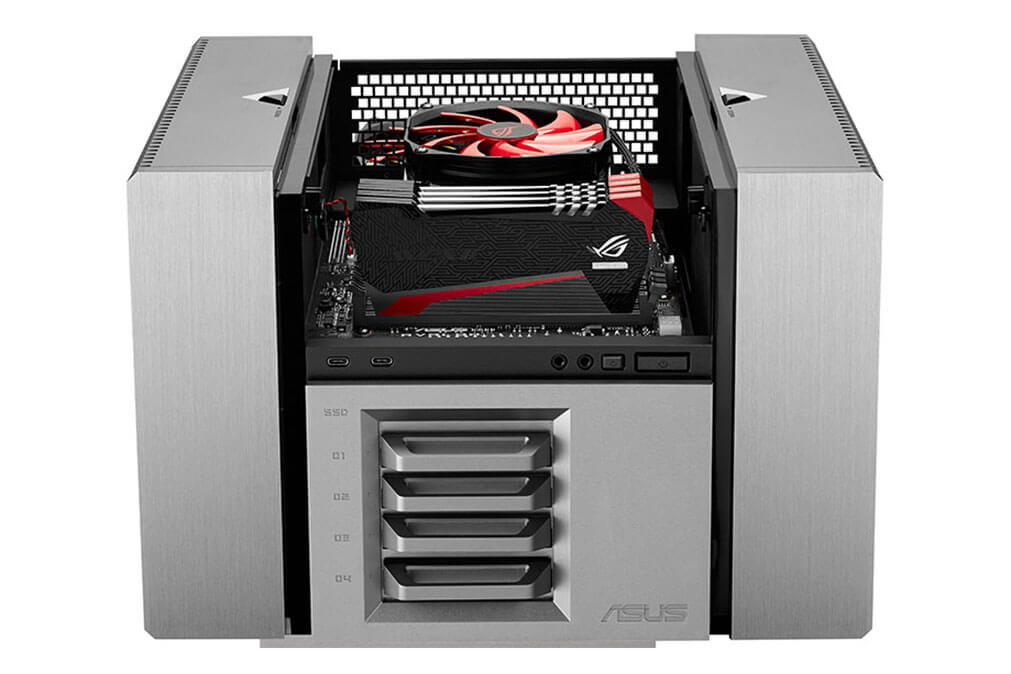Asus ROG Avalon – The Future of DIY PCs
Although DIY desktops have advanced and evolved at a relentless pace in this decade, the components still connect with wires and slots and screws.
Asus company expects to make PCs more modular, easier to build, and more tightly integrated than ever before. The designers and engineers have developed a working prototype showcasing the possibilities by debuting the concept at ROG press conference 2016. It will certainly explore a new path forward for gaming machines and PCs as a whole.
What is Asus ROG Avalon?
Nowadays with the help of standardized components and simplified operating systems (RIP MS-DOS), building a PC isn’t all that difficult. Avalon concept PC integrates all aspects of the PC for a redefined design, but still supports the platform’s DIY strengths. It looks more like a premium stereo system than a traditional computer.
ASUS’s ROG division has unveiled a new product called the Avalon that’s designed to alleviate interchangeable I/O modules that feature different ports for different use cases. It is essentially a motherboard and chassis hybrid that’s designed as a single unit, so you don’t need to buy the two parts separately. It allows for a modular and easily upgradable system that’s devoid of complex cabling. It’s actually far less modular than building your own PC part-by-part. Asus has taken care of carefully routing the wiring ahead of time at the factory.
Design and Important Features
Asus ROG Avalon features SSD, PSU and graphics-adapter boards so you can just plug those components right in without any cabling. On the rear of the machine, there is a modular input/ output unit for various connectivity options.
On the rear of the machine is a modular rear input/ output unit that lets you have whatever connectivity options you want. Unlike the purely aspirational concepts often seen in the tech industry, this prototype is a working system built on existing technologies.
The Virtual Reality module includes extra USB ports, while a Home Theatre module and also a Workstation module with two Ethernet sockets. There is a need for faster networking and redundant ports, and home-theater PCs can benefit from upgraded audio.
With sufficient power at its disposal, the motherboard can provide connectors for hot-swap storage bays that routes power and signal lines to the motherboard. Because of this edge connector treatment, delivering power to components directly via the motherboard, from a tangled mess of cables has become easy.
Asus offers components that are pre-installed—while the graphics card still needs to be inserted into the PCIe slot on the outer edge of the system. It optimizes the layout with a plug-and-play style that can be easily accessible and slotted in instead of being buried behind other components like in a normal PC build.
An integrated back plate with threaded holes does take some of the stings out of installing a CPU cooler and it remains in the prototype stage.
Availability
There’s no update on price, no release date, and no plans for sampling just yet. The design is still subject to change and it will allow more variation with a smaller collection of components.
Buyers will be from advanced users who pick up a unit and will want to give up the freedom of the traditional build and be tied into Asus’ hardware.
Asus ROG Avalon will surely become so popular because it will deliver those core components in a much smaller footprint than traditional desktops, and it is also enabled with new levels of integration that can make PCs easier to assemble and less expensive to build. Company’s motto is that even hardcore enthusiasts should appreciate the reduced clutter that is also cheaper to implement than conventional wiring.

Bharat Mamtora is Online Marketer at Nimblechapps Mobile Game Development Company. We provide mobile game development services for iOS and Android Platform.





